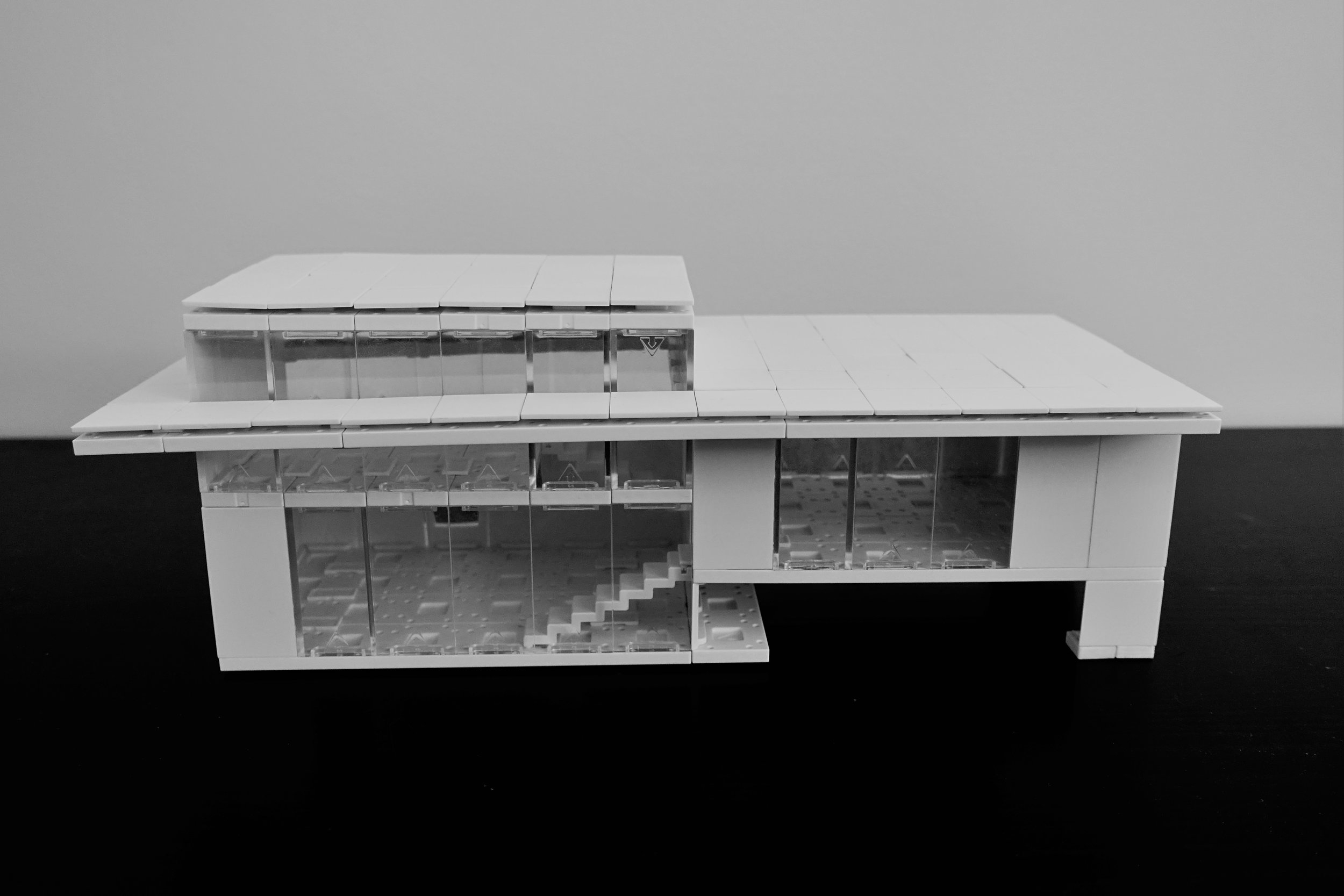ARCKIT Model 5
Project Details:
As I began this project, I thought of creating a multilayered environment that really focused on space optimization. I wanted to try something different with the way of laying space in Arckit. Many initial physical models are built with the idea that there is a flat existing surface. I imagined a structure resting on the side of a hill, presenting three separate floors where the topography has a heavy influence on the building's programming of space. This Museum or Art Gallery building comprises of three different rooms in a "Zig Zag" tier formation.
One would enter the space and approach and information desk and lobby with restrooms. From here they would ascend to the intermediate "half step" room and be met with Gallery Space 1, a multipurpose environment with a strong balance of light and shadow. Rising up to the space above, Gallery Space 2 rests above the lobby space and provides an interesting environment where the visitor is able to look out at a green roof doubling as a sunshade. Not only providing a natural feel for any gallery or museum, it would absorb a lot of the direct light and act as a randomly generated curtain wall above a 4 foot threshold.
As this blog is manly focused on constructibility, a green space acting also as a sunshade seems very impractical without proper support, something that would result in a significantly thicker louver system that would need to be specifically calculated. But as an initial concept model, this design is visually appeasing and I may come back to it for more feasible iterations.






